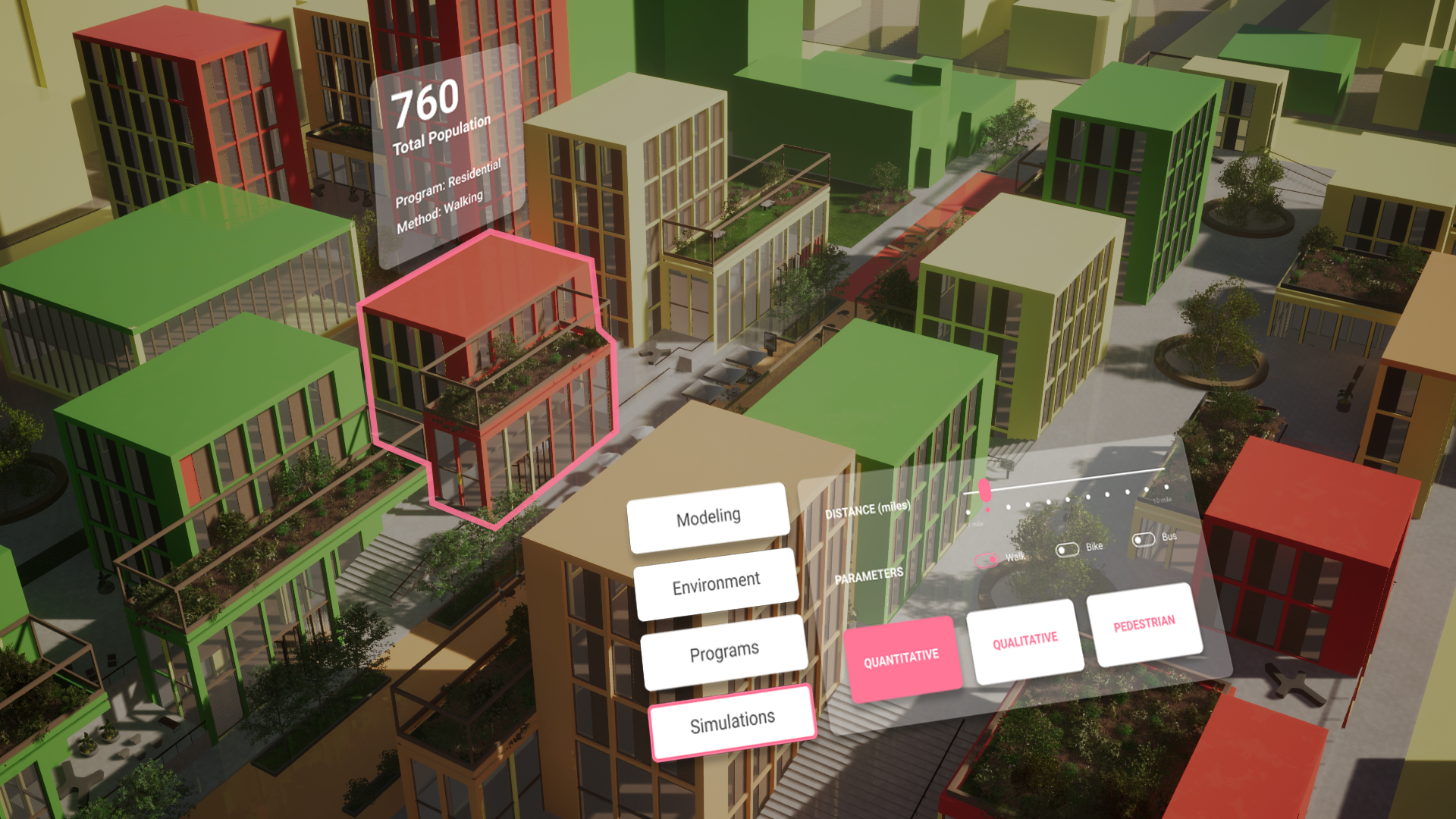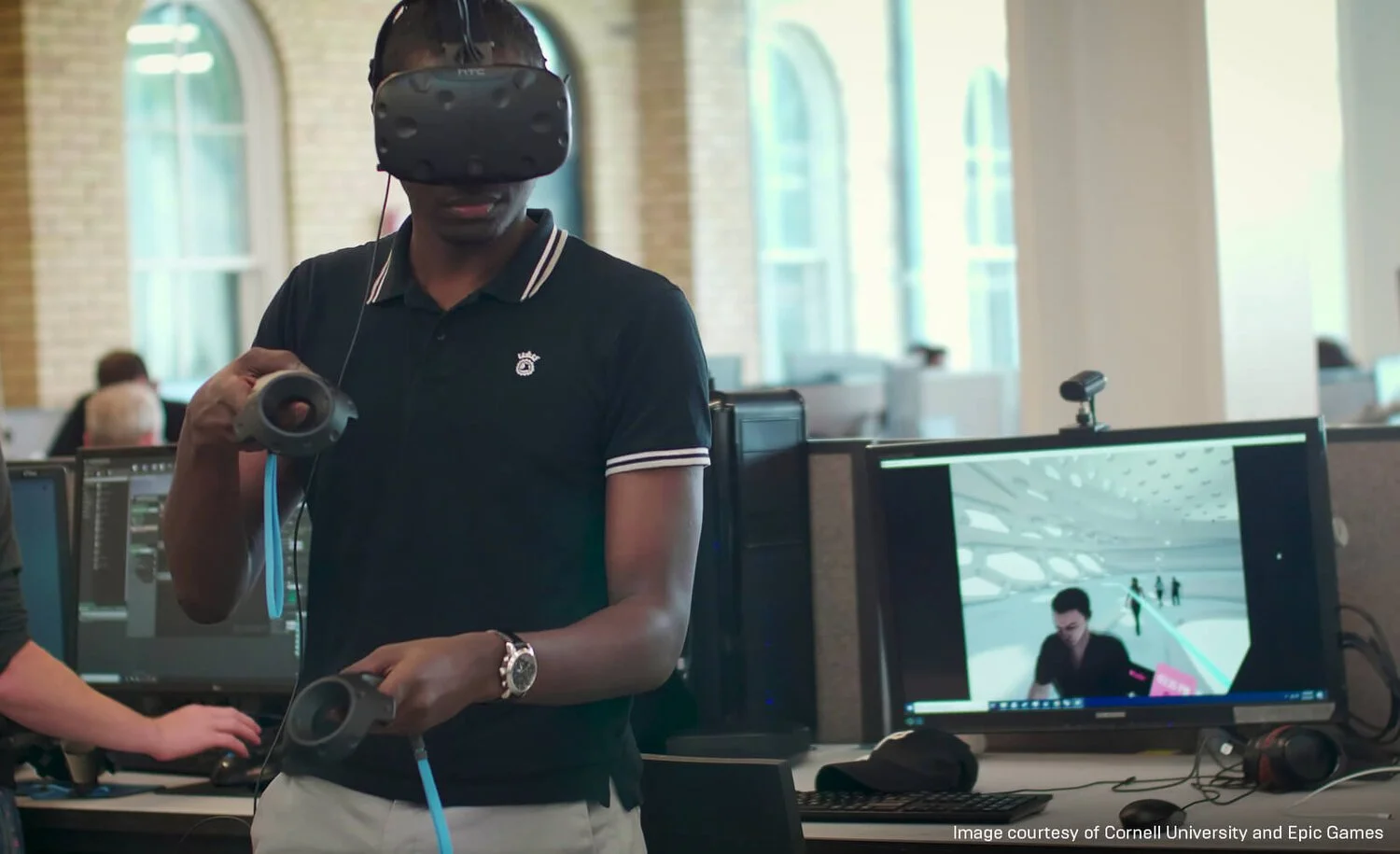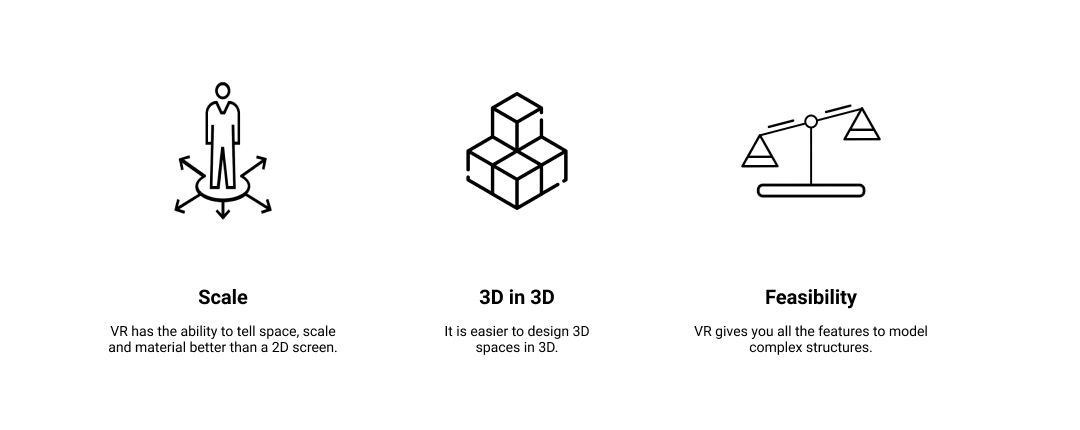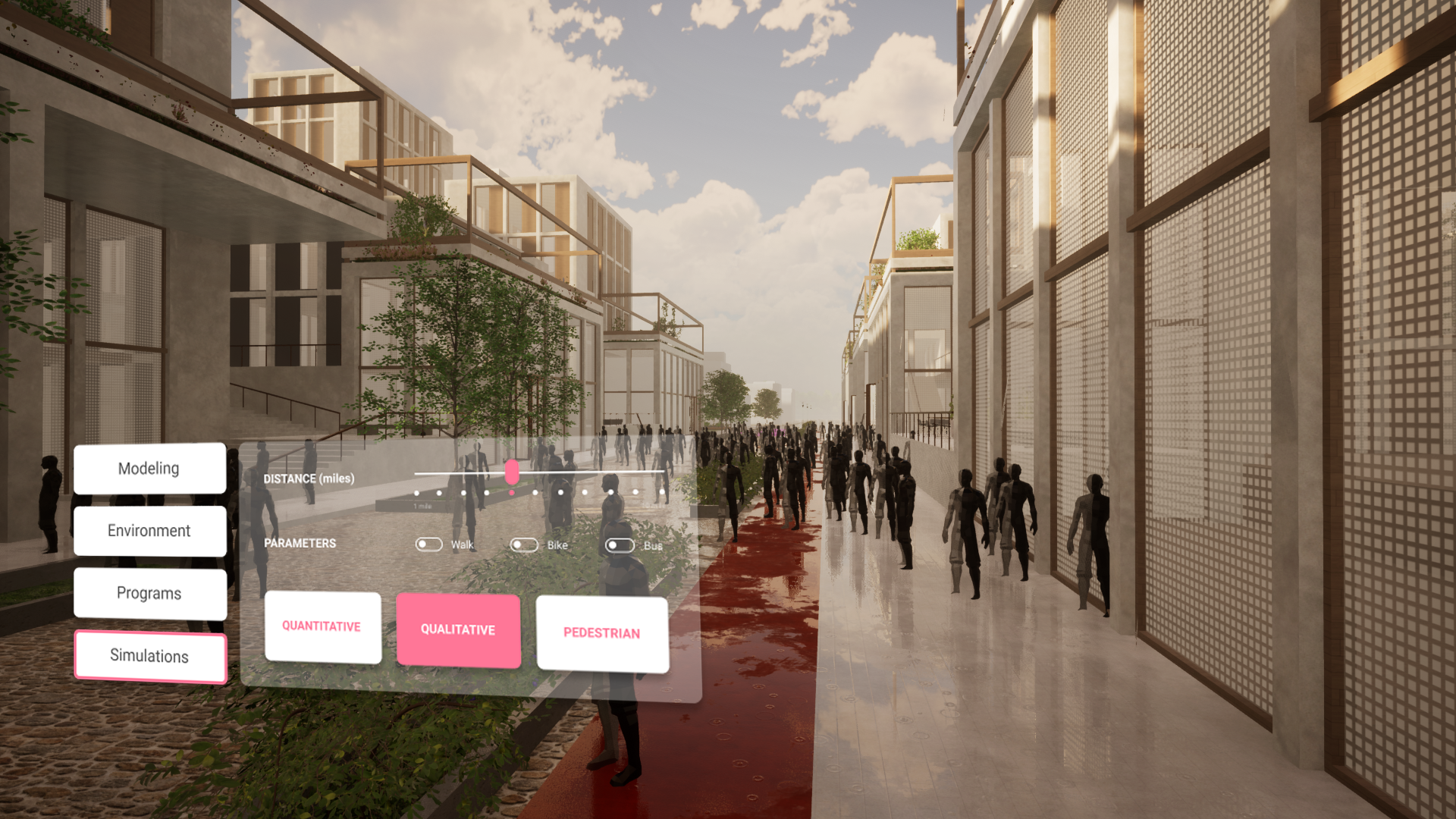
VR for Architects.
Rethinking the design process for VR.
Dev TEAM: SREENIux team: SREENI, JOSEPH WU, KENNY KIMArchiteture Team: SREENI, Sahir Choudhary, Davis ZhuMY ROLE: UX DESIGN, full stack devDURATION: 5 monthsBackground
This project was part of a collaboration with Epic Games (Unreal Engine). Virtual Reality is relevant in Architecture for its ability to accurately tell space and scale. But architects rarely use it for anything besides presentation.
We built a tool that allowed designers to sketch, inspect and modify their designs in VR. We also connected this tool to their simulation tools, and enhanced simulations in VR. This resulted in significantly shorter design pipelines, quicker designs and an integrated workflow.
ResearchProblem and Assumptions
We started by outlining the assumptions we have made for VR Design toolkits.
VR has the ability to tell space, scale and material better than a 2D screen.
It is easier to design 3D spaces in 3D.
VR gives you all the features to model complex structures.
Yet, architects are hesitant to move into VR. Why?
RESEARCHUnderstanding the Persona
During the research process, we wanted to understand the demographics, psychographics and schedule of a typical architect. This process revealed their pain points, what they care about and where they spend a majority of their day.
RESEARCHCurrent Platforms
Using current platforms in different parts of the design pipeline helped us reveal what made the process so tedious and why architects were unable to migrate into VR in its current state.
RESEARCHUser Journey
General Workflow and Pain points:
Extremely long workflow
Too many conversions and exports
Mistakes put you far back
VR Painpoints:
VR editing is difficult with the complex features
Mistakes require re-import and export
Simulations are an important part of the process
“VR makes me import and export a million times if I see a mistake during the design process…it’s just inefficient, I don’t have the time”
“Why do I need to see simulations in VR? It doesn’t tell me anything more”
ANALYSEKey Takeaways
Extremely long pipelines make it difficult to iterate quickly
Every stage requires multiple tools and exports
Later stages give you more significantly information, so a mistake can bring you back to the start
The tools are not connected to each other
There is no need to view things in VR that can be understood in 2D
IDEATEFeasibility Matrix
IDEATE
Key Features
In order to reduce the length of the process, the multiple exports and the lack of features available in VR, we decided to build a 2 way pipeline between VR and existing architecture simulation tools. This allowed us both to solve the main problems, save computation time by making use of existing solutions and also enhance those solutions with VR’s additional capabilities.
IDEATE
System Workflow
Our new user flow allowed architects to stay in VR and work on multiple parts of the process - modeling, scale, experience etc using our two way pipeline into traditional architectural tools.
IDEATE
Information Architecture
COMPARECurrent Traditional Architecture Interfaces
Current architecture interfaces consist of complex set up, difficult to understand and visualize results.
PrototypeOur Enhanced VR Architecture Pipeline
Our platform takes complex simulation results and brings it into VR with a click of a button allowing users to view quantitative results while at full scale instead of moving back and forth between platforms. It also allows users to edit while in VR and re-simulate instantly.
Additionally, it takes converts simulations into full scale, in motion figures that simulate how the space would “feel” rather than a series of numbers.













